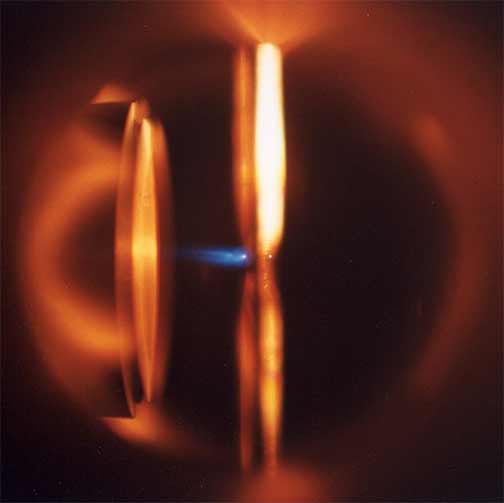Ultrafast Surface Photochemistry in the VUV
This project was part of a TMR Network. Being part of a TMR network is often hard work, including walking up snowy mountain roads and skiing. During this work, we built a rather unique machine to study ultrafast (about 1 ps or less) photochemistry in the vacuum ultraviolet regime. A schematic drawing of the apparatus appears below. The required photons were made through a laser-based technique: high harmonic generation with an Ar-ion-pumped Ti:sapphire laser. This laser produces roughly 80 fs pulses at a wavelength near 800 nm. The output of the Ti:sapphire laser is focused into a rare gas that flows out of a tube in a vacuum chamber, as shown in the photo on the right. A nonlinear interaction between the laser field and the atoms in the rare gas jet creates the photons that we are after: ~10-40 eV or 120-30 nm. We studied the photochemistry of O2 adsorbed on graphite. This was the first use of HHG to initiate surface photochemistry.
For further information on related topics, try these sites:
- Kapteyn-Murnane Labs
- Attosecond physics in Lund
- Attosecond and High Field Physics at the MPI Garching (These guys do incredible work but this is the worst website ever. To be fair, I'm sure it's a work in progress.)
- High Harmonic Generation
- Movies of HHG
- More on HHG
- Labs working in Surface Science, Nanotechnology and Catalysis
- Dynamics of Gas-Surface Interactions

